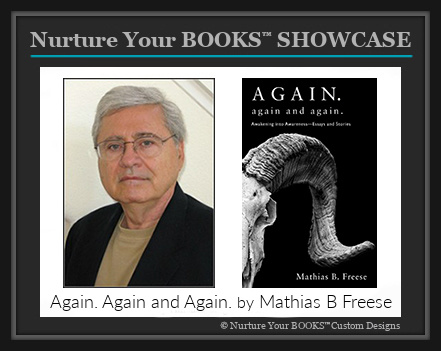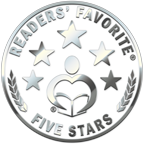I feel compelled, as a writer, to introduce you to my own idiosyncratic ways of going about writing a story. The creative process, as I observe, might prove of worth to reveal as I experience it. After finishing and publishing TESSRAE: A MEMOIR OF TWO SUMMERS I lay fallow. I never know what the next book will be about but I do know that I will begin something as my need to write has not been stifled by age or an arthritic mind. I observe myself or as Krishnamurti wrote, “The observer is the observed.” Chew on that for a while. So, over the past few weeks an amorphous idea began to gestate. In fact I wrote a few pages called “The White Parasol”. But I get ahead of myself. What I want to explore here is my own creative process with the hope you may find it of note.
A few weeks back I was invited to a local institute to speak about memoir writing. In preparation I looked up Bernsteins’s magnificent soliloquy in CITIZEN KANE, a scene that Welles believed was the best he had ever filmed. In that sequence Bernstein speaks of a young girl with a white parasol he had seen as a young man decades ago. All this is in response to the reporter’s quest to discover what or who Rosebud was. Bernstein says that not a day has gone by that he has not thought about the girl with the white parasol. Memory and time are condensed in that observation and it has a gravitas that needs time to grasp or ponder. It is a valid cliché as we grow older images from the past grow brighter with a concomitant feeling, at times, of nostalgia, sentimentality, pathos, and loss and attachment.
And so all this was floating about in my mind when I came across quaquaversal which I discovered serendipitously looking up a word in the dictionary. Briefly, it is defined as being in all directions, emanating, if you will, from a common center. I liked that immediately, and I thought of myself as a writer in that I tend to turn inwardly, deeply, profoundly so as if in search of the geode that may be the heart of any new story. David Herrle reviewed TESSERAE and observed:
Anyone familiar with his other work isn’t surprised by Freese’s ability to always dig deeper through apparent bottom after bottom of self-analysis. “Fearlessness makes for authenticity in writing, so I can measure myself and not be a crybaby about it,” he writes near the end of the book. (In fact, he outdoes himself when he faces and reveals the truly tragic suicide of his daughter Caryn.) I’m reminded of what Orson Welles admitted to Henry Jaglom: “I’m dark as hell. My films are as black as the black hole.” This also is true of much of Freese’s literary output, but despite that darkness, that tendency to descend into the psyche’s hell, there is illumination and even rejuvenating sunlight. Frankfurters, root beer, ice cream and cotton candy at Coney Island glow alongside “tumultuous sex” with fantasy-come-to-life lover Marlene. In contrast to a fundamental sense of shame and ominous Rorschach perceptions, there are “non-maudlin memories”: childhood movies and radio shows, makeshift slingshots and scooters, the unintentional comedy of territorial, scolding adults.
And so leave it to another writer to say it best. As the days went on with these story pieces floating about in mind I came upon the idea of following the spine of CITIZEN KANE by having a deceased character (me) being deciphered by his survivors as they guess about this artifact they find or the last words he has to say upon his death bed. I intended to break rules and do things with the structure of the story, as yet undefined, so that all the tessera might come together into some visible mosaic.
In fact this essay was written before I finished the story. In fact this essay may help me to finish this story. I am writing to explain to my self –and to you – the process by which I noodle out a story.
I created two rosebuds for the story, one which is shared while the main character is alive, and another which is cryptic to his son who hears these words directly. The dying man utters Kaye-Halbert, the hyphen of importance. The son mistakenly assumes that it is the name of a girlfriend, or some girl in a white parasol from the past. He asks relatives and friends if they have ever heard that name and he comes up zero. He goes online and discovers that Kaye-Halbert was a TV set from the early fifties, in fact, a vintage TV set, probably 19 inches with knobs for volume, horizontal and vertical in the front, jammed with tubes. With this information he begins to consider. He recalls– he begins to freely associate — that his father told him that he ran home from school in 1951 and was able to catch the last inning in which Bobby Thompson hit a classic home run off Ralph Branca to win the World Series. Truly memorable. And now he had it. Kaye-Halbert was his father’s rosebud, a dying one, an image from his childhood for some reason that resonated within. Indeed, his grandmother had died and her last words, his father shared with him, was “Father Knickbocker.”
So now in my mind I have two rosebuds to incorporate into my story.
What is the motive for my writing this Wellesian jigsaw puzzle, shades of Susan Alexander. I think I want to self-discover myself once again. All my writing is about my navigation. I am the Admiral of the Ocean Sea. I want to access my core and from that quaquaversal. And so it is a search, artfully constructed through the artifice of a story. CITIZEN KANE looms large in several of my essays and stories for there is something to that film which I experienced as a very young boy which grabs me, throttles my sensibilities and draws me close to it. I think it has to deal with loss. KANE reeks of loss – his mother; his sled; his mistress; his wife; close friends. And in a way he loses whatever self he had. I will say boldly he has lost love and I identify with that, for in a way, it happened to me.
When I was a young boy…when I was a young boy I visited a manufacturing plant run by my uncles, Seymour and Bernie. My father was in charge of plating. The Freeses made rhinestone jewelry of a high order. I used to wander about and simply observe. One black woman enjoyed me as a young boy and was most affectionate to me. I’d watched as she opened a tissue packet filled with stones, I think imported from Czechoslovakia. With a bracelet that had been plated and designed by Bernie, plated by my father in rhodium, she embedded by hand stone after stone, craftily pressing down on the facets with a knife. It was hard work, often tedious, but the outcome was beautiful. On other sites workers would work on a clay tablet in which pieces were put together to make a pin, necklace or earrings. They would solder these brass pieces and the odor of resin remains in my mind. After that they were taken to my father’s site in which they were plated and then returned to the room where rhinestones were placed into them. Here you have an association as I construct this small essay. Here is an association that I will use to show you how I go about constructing a story, unconscious to conscious. For what I take from all this is infinite care and infinite details.
Details! All my stories, all my writing are embedded like a stone into a setting with details. THE WHITE PARASOL will succeed or not on the careful placement of details. And so I will share some of the details I may incorporate or not into the story; they are a buzzing mentation in me at this moment.
After his father’s death, his son, Daniel, goes through his belongings, as we all must do. What he comes upon are items from my own life that I will use for the story, so they really do exist and I need not imagine too much but simply describe. [The irony is these will be my artifacts for my son to collect, assess and metabolize as a son. Oh, the psychological permutations are manifold]. So, like sled Rosebud what I own and what I describe are condensations of many different layers of meaning, call it gravitas if you will. A tie clasp from the fifties has a bluish tint to the square stone attached to it, given to me by my cousin Irving, and a favorite of mine and a reminder of Irving himself; Daniel comes upon two maroon prayer bags for my tallis and phylacteries which I was given by my Grandma Fanny for my bar mitzvah [I will be buried in this tallis, for I have asked my son, Jordan, to do that]. Daniel comes upon JEWISH TALES AND LEGENDS, the first book I ever owned, with an inscription from my Grandma Flora given to me when I was about 7 or 8. I devoured this book and many years later used some of it in a story I was writing, to good effect.
And Daniel finds a very thick album with many photographs of his father’s family, his mother and father, his uncles, aunts, et al. The album has a page in it in which his father identifies each and every relative because he knows no one else would. His father is a saver, an observer, loyal, a rememberer, or the rememberer is the remembered. As Daniel scours and prowls the remains of his father, his artifacts, he comes across a gold mezuzah, a picture of his sister at age one, and of all things, an ancient Duncan yo yo from the fifties. And there is one old shoe tree that his grandfather passed on to his father who used to be in Vaudeville and was a hoofer. In a jewelry box he unearths a Queens College school ring from 1962, his grandmother’s silver marriage band and the most tender finding of all a ring made in shop class while his father was in junior high school which had a heart soldered to it, a gift he gave to his mother. Some of these I will distill and take only the best details I can. After all, artifacts are our leavings, the cloaca of having been.
There is a primordial perhaps genetic tear in all of us; some don’t know it exists, and cannot palpate it; I feel it, I am a writer. It is in Bernstein’s tale of the white parasol. So I will put the story of The White Parasol on my blog in the near future, when it all has coalesced and hopefully, it has become quaquaversal.





